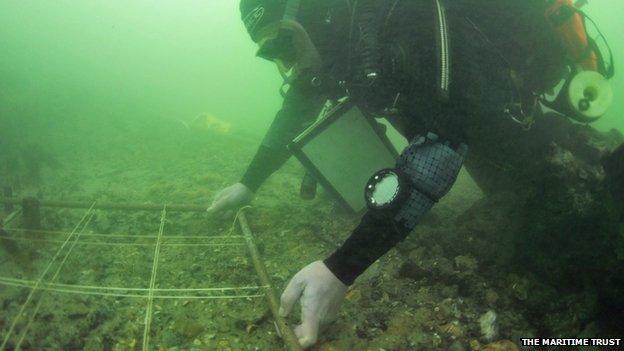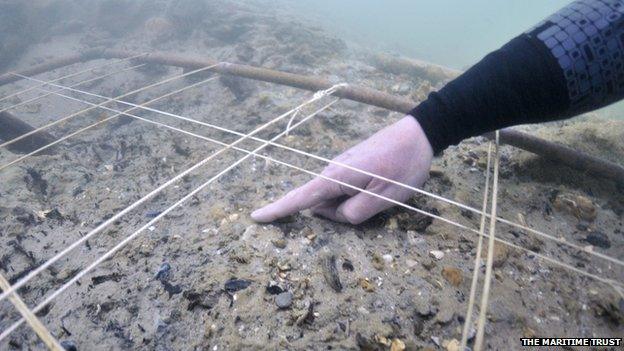Scientists find evidence of wheat in UK 8,000 years ago
- Published

The site is submerged in the Solent
Wheat was present in Britain 8,000 years ago, according to new archaeological evidence.
Fragments of wheat DNA recovered from an ancient peat bog suggests the grain was traded or exchanged long before it was grown by the first British farmers.
The research, published in Science, external, suggests there was a sophisticated network of cultural links across Europe.
The grain was found at what is now a submerged cliff off the Isle of Wight.
Farming of plants and animals first appeared in the Near East, with the technology spreading along two main routes into Europe.
The accepted date of arrival on the British mainland is around 6,000 years ago, as ancient hunter gatherers began to grow crops such as wheat and barley.
The DNA of the wheat - known as einkorn - was collected from sediment that was once a peat bog next to a river.
Scientists think traders arrived in Britain with the wheat, perhaps via land bridges that connected the south east coast of Britain to the European mainland, where they encountered a less advanced hunter gatherer society.
The wheat may have been made into flour to supplement the diet, but a search for pollen and other clues revealed no signs that the crop was grown in Britain until much later.
Cultural connection
Dr Robin Allaby of the University of Warwick, who led the research, said 8,000 years ago the people of mainland Britain were leading a hunter-gatherer existence, while at the same time farming was gradually spreading across Europe.
"Common throughout neolithic Southern Europe, einkorn is not found elsewhere in Britain until 2,000 years after the samples found at Bouldnor Cliff," he said.

The DNA evidence is remarkably well preserved
"For the einkorn to have reached this site there needs to have been contact between mesolithic [the culture between paleolithic and neolithic] Britons and neolithic farmers far across Europe.
"The land bridges provide a plausible facilitation of this contact. As such, far from being insular, mesolithic Britain was culturally and possibly physically connected to Europe."
The research shows that scientists can analyse genetic material preserved within the sediments of the landscapes stretching between Britain and Europe in prehistoric times.
Co-researcher Prof Vincent Gaffney, of the University of Bradford, said the find marked a new chapter in British and European history.
"It now seems likely that the hunter-gather societies of Britain, far from being isolated were part of extensive social networks that traded or exchanged exotic foodstuffs across much of Europe," he said.
Tangible link
And Garry Momber of the Maritime Archaeology Trust, which collected the samples from the site, said work in the Solent had opened up an understanding of the UK's formative years in a way that he never dreamed possible.
"The material remains left behind by the people that occupied Britain as it was finally becoming an island 8,000 years ago, show that these were sophisticated people with technologies thousands of years more advanced than previously recognised.
"The DNA evidence corroborates the archaeological evidence and demonstrates a tangible link with the continent that appears to have become severed when Britain became an island."
Follow Helen, external on Twitter.
- Published16 July 2013
